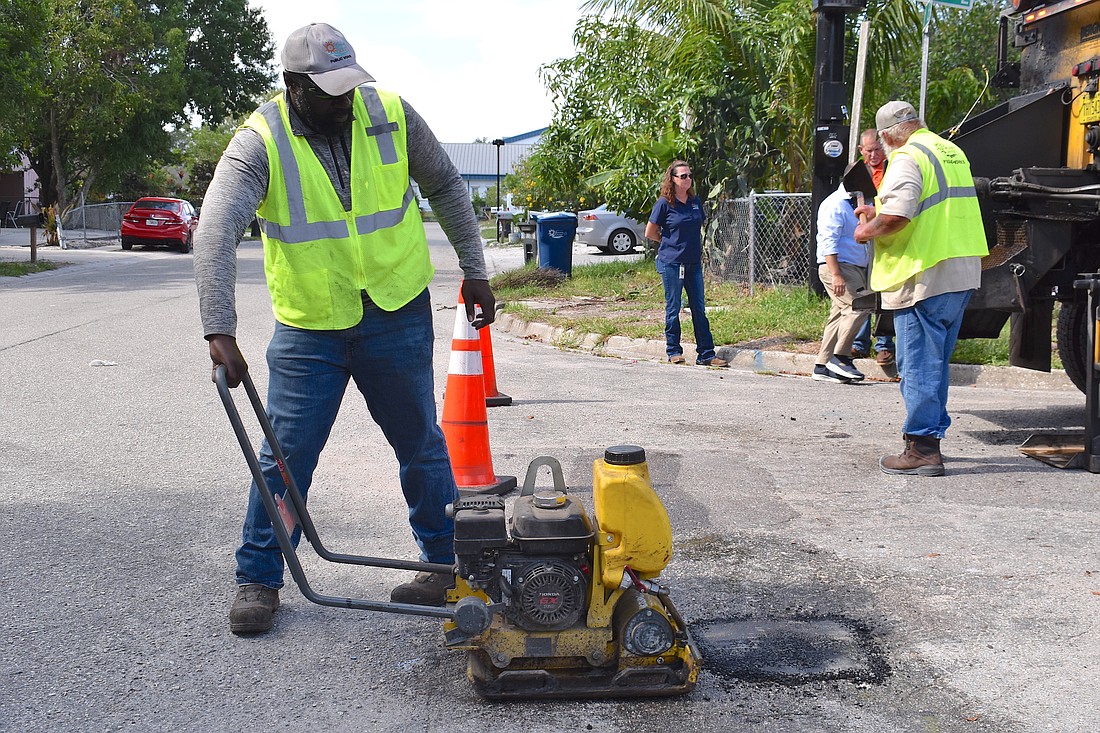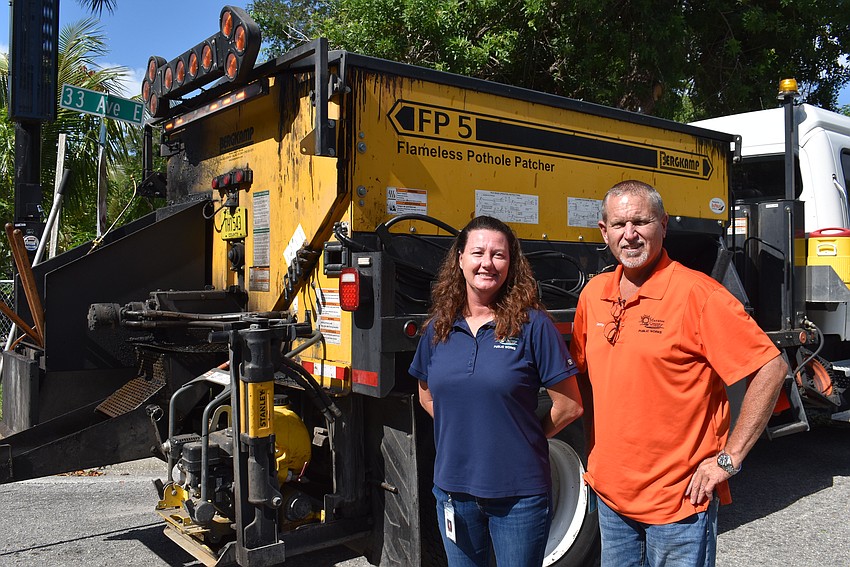- November 24, 2024
-
-
Loading

Loading

So there you are, driving down Lakewood Ranch Boulevard, and traffic is jammed up, trying to merge over into one lane because a Manatee County truck is just ahead with its lights flashing.
What the heck?
It's hard to consider, in that moment, that the road crew causing the backup is there to help.
They are, after all, filling a dreaded pothole.
While this might be considered hurricane season, it is even more so pothole season. Day after day of rain can lead to standing water on the roadways, one of the main causes of potholes.
Once they form, drivers often don't realize they are there until they hit them.
Thump! There goes your wheel alignment.
The county's Public Works Department understands motorists' frustration with potholes. So much so that the department utilizes eight full-time workers whose job every day is to fix problems in the roadway.
Last year, the county repaired approximately 7,000 potholes with 700 tons of asphalt. Thus, it is likely you have come upon a road crew repairing the roadway.
"We're responding to a problem," said Danny Thomas, who is Manatee County's field maintenance division superintendent for Public Works. "These guys are there making a repair for you and the community. It's like with any road project, you should slow down and move over."

The road crew workers are just like any motorists so they understand the frustration. However, some drivers can yell some nasty comments as they go past.
"It's like, 'What the heck are you doing here?'" Thomas said. "We spend more time explaining than fixing the pothole. But we are in that environment where we are directing traffic. and people are running late from work. and they don't have the patience.
"And we do get 'thank-yous,' too."
Thomas has been with Public Works for 36 years, so he knows the drill. It's why the county tries to be as proactive as possible when it comes to seeking and repairing potholes.
The eight full-time pothole crew employees often break up into two or three groups and head to various points in the county to examine roads and look for potholes. He points out that they do it well, too, because of the 7,000 potholes that were fixed last year, only about 800 were due to a call from the public reporting a problem.
Thomas said anything bigger than a cellphone is considered a pothole, although once he found a pothole 4 foot by 4 foot on a back road near the Sarasota Bradenton International Airport.
He said repairs are a fairly simple process, where the crew arrives, squares up the hole by cutting its edges, then digs out any loose material before compacting the remaining material and filling the hole. The new material is compacted, a tar tacky material is sprayed on to seal it, and the crew is done, often in less than 20 minutes.
Of course, where there is one pothole, there are likely to be others. The crew will fix more if they see them.

Repairing a pothole can take extra time, for example, if the crew is working out by the Hillsborough County line.
The patch trucks used are specialized vehicles, usually a crew cab style truck with a hopper in the back that can haul up to 7 tons of asphalt. The truck has heaters and burners to keep the asphalt soft, and also is equipped with jackhammers, compactors and saws.
He noted that not all breaks in the roadway are potholes. Sometimes they can be caused by failures under the pavement in water or sewer lines. In that case, the public usually doesn't realize what kind of problem it might be when reported.
The crew members often see a pothole about to happen when they see "alligator cracking" in the roadway.
Myra Prater, the Public Works Main Division Manager, said the varying temperatures also cause potholes, with the heating and cooling of the surface causing expansion and contractions that opens space that can be occupied by water.
"Then we do have our hot spots, our typical high-volume roads," she said.
Prater noted that before the county even takes over a road that is built by a private contractor, county officials are present during the process to make sure it is up to county standards.
Over the years, she said materials and techniques have changed. In the late 1980s and 1990s, roads were built with an expectation of lasting 50 years. Now, with the traffic volumes so much higher in the county, that expectation has generally been lowered to 20 years.
The roads take a pounding.
However, so much more information is available now about road construction as different materials have been tested over the years and researched. Materials that were not the best have been phased out.
Then again, Prater said limitations exist due to funding.
She echoed Thomas' comments about Public Works being proactive.
"Typically, we find potholes before they get all that big," she said. "And when they are reported, about 98% of the time we get to them in 48 hours or less."
The county likely will have to expand its pothole efforts in the future.
"Say someone has lived in the area for 20 years," Thomas said. "Now there seems like there are more potholes. But the road is older and it's taking more than 10,000 more trips a day. We have highly (traveled) roads and they will wear out."